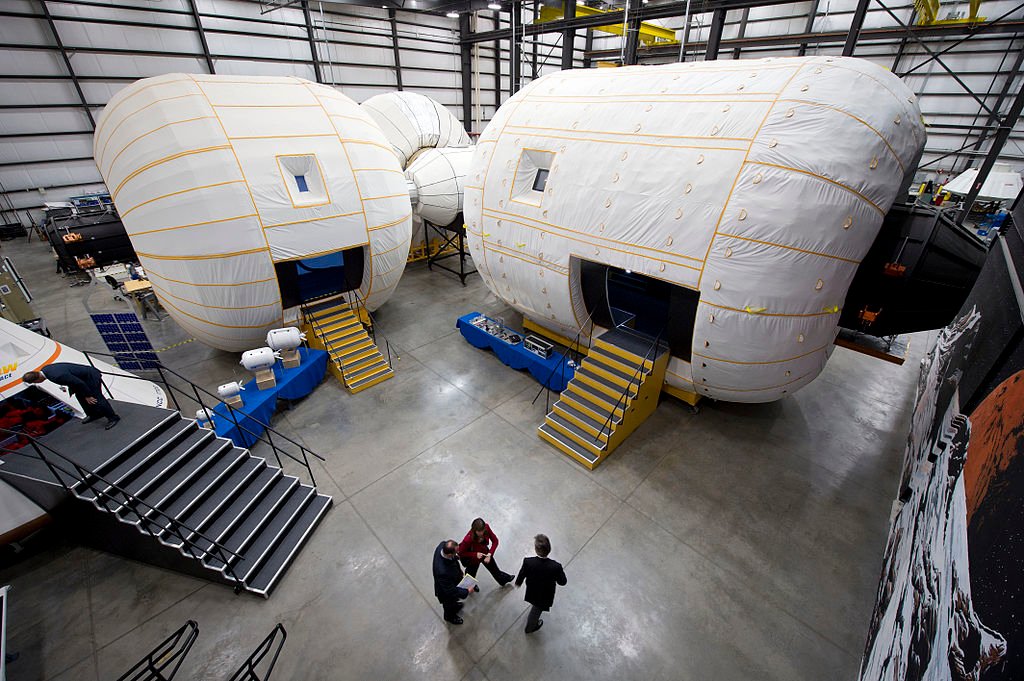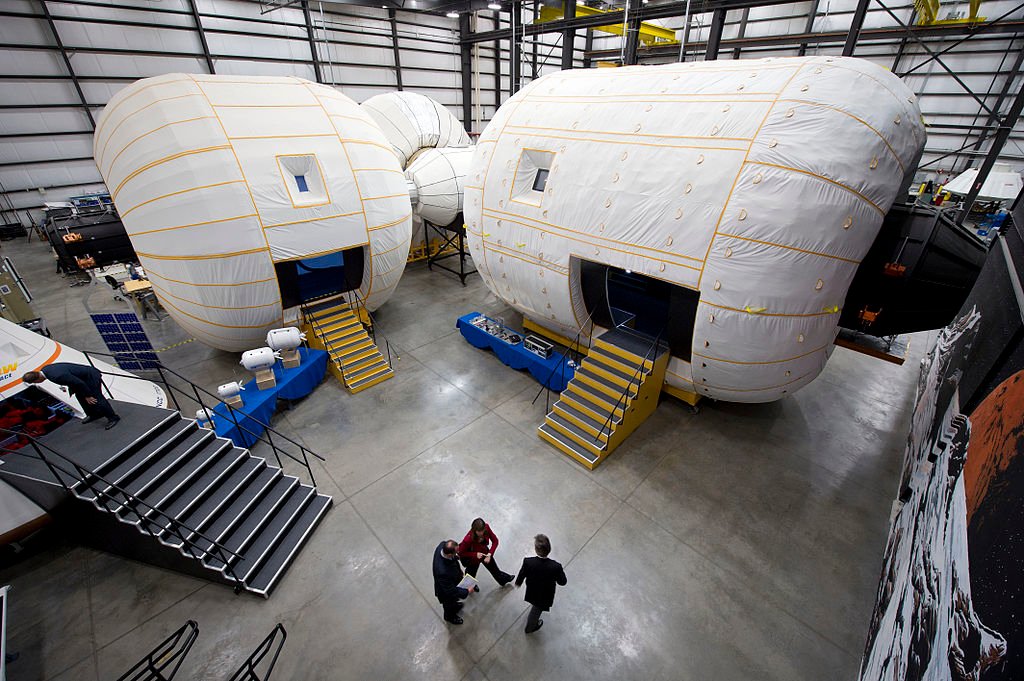

The International Space Station is going to be getting a new room later this year — and it’s the outer space equivalent of a birthday party bouncy castle.
The Bigelow Expandable Activity Module (BEAM) is a cylindrical module about 10 feet in diameter and 13 feet long. Like other modules designed to attach to the station in flight, it will connect to an open docking port, this one will be on the U.S. Tranquility segment of the station. Unlike most other modules, the BEAM doesn’t actually have any particular use — its job is just to sit there and not leak for two years, after which it will be discarded and allowed to burn up on re-entry. But the real difference is in the delivery: although it will be 10 feet by 13 feet, it’s only going up in a 5 foot by 7 foot package. Astronauts will pressurize the atmosphere within it and allow it to inflate to its full size only after delivery.
This is only possible because, like a bouncy castle (and very much unlike other space station modules), BEAM is made out of flexible, foldable material instead of rigid paneling. Of course, your typical bouncy castle wouldn’t last long against the rigors of space, so instead of thin PVC or nylon, the material comprising BEAM is an improved, extra-strength variant of Kevlar called Vectran. The material is layered and designed to protect the module interior against the rigors of vacuum, radiation, and micro-meteorites. And it will do so taking up less room on the Dragon delivery vehicle and at a lower weight than a similar-sized module of more conventional construction.

One of the most significant expenses of space flight is boosting equipment and supplies out of the gravity well formed by Earth. To maximize the benefit of each launch, spacecraft designers have gone to extremes to find new materials or clever techniques to achieve the same level of functionality and durability at a lower weight. The flexible materials that the BEAM is made out of are the logical progression of this research.
You might think that such flexibility would also lead to fragility or a component vulnerable to popping like an errant balloon. And you might not be alone in thinking that — there’s a reason NASA doesn’t have any planned uses for the module and intends to keep the hatch closed at all times, except for a few programmed inspections by station astronauts.
But there are good reasons to think that a fabric hull might be safer, not more dangerous, than rigid hull materials. Bigelow, the North Las Vegas company which has developed the module, believes that the flexible and layered material will absorb impact energy from potential hits without shattering the way metals or composites might. In ground-based testing, the material successfully stopped objects which went right through the materials that most ISS modules are constructed with.
Combining the safety factor with the lower weight makes it almost a sure bet that when humans venture beyond Earth’s orbit, they’ll be doing so in spacecraft which are, to some extent, inflatable.
Bigelow Aerospace has bigger plans on the drawing board for such craft. The company had already launched two unmanned test beds in 2006 and 2007, both of which are still in orbit today. And if the BEAM testing is successful on ISS, the company plans to make available a stand-alone inflatable space station, the B330. The B330 would be about one third the volume of the ISS. Although no buyers have been identified, the company says it could deliver two B330s by the end of 2018.

Even larger products are on the boards. A version with twice the volume of ISS is being designed, which could either be deployed in orbit, or to the surface of another planet or moon.
Although the BEAM is a new, and private, venture, the origin of an inflatable component for the ISS is neither new nor from the private sector. The original vision belonged to NASA, which planned an even more ambitious version of an inflatable module called TransHab. TransHab would have been a four-story, 26-foot diameter living space, complete with separate galley and shower facilities. The module was intended to be a proof of concept for an eventual Mars mission variant; the name “TransHab” was shortened from “Transit Habitat.”
Congress canceled TransHab in 1999 and encouraged NASA to sell the technology that had been developed to a private bidder. That turned out to be Bigelow Aerospace.
Now, NASA and Bigelow are joining forces to test BEAM over the next two years. If successful, it’s almost certain that more inflatable craft will be taking to the skies as an integral part of the future of manned spaceflight.